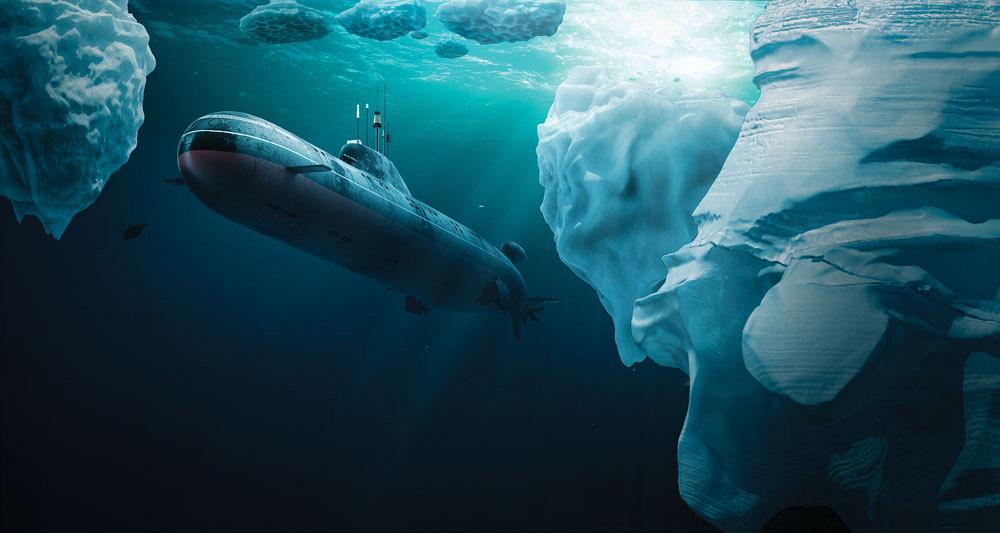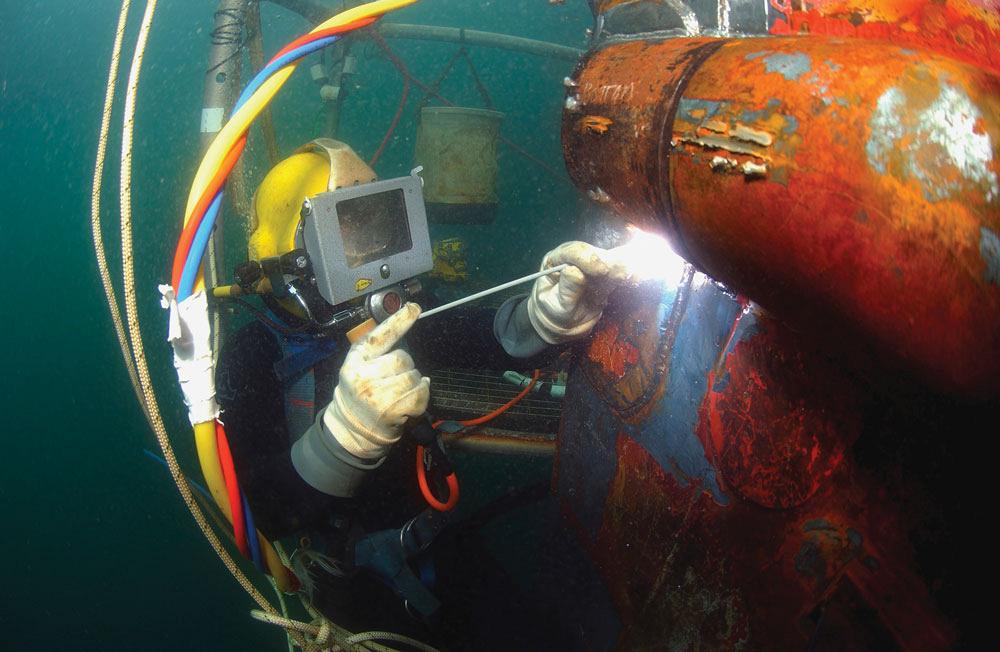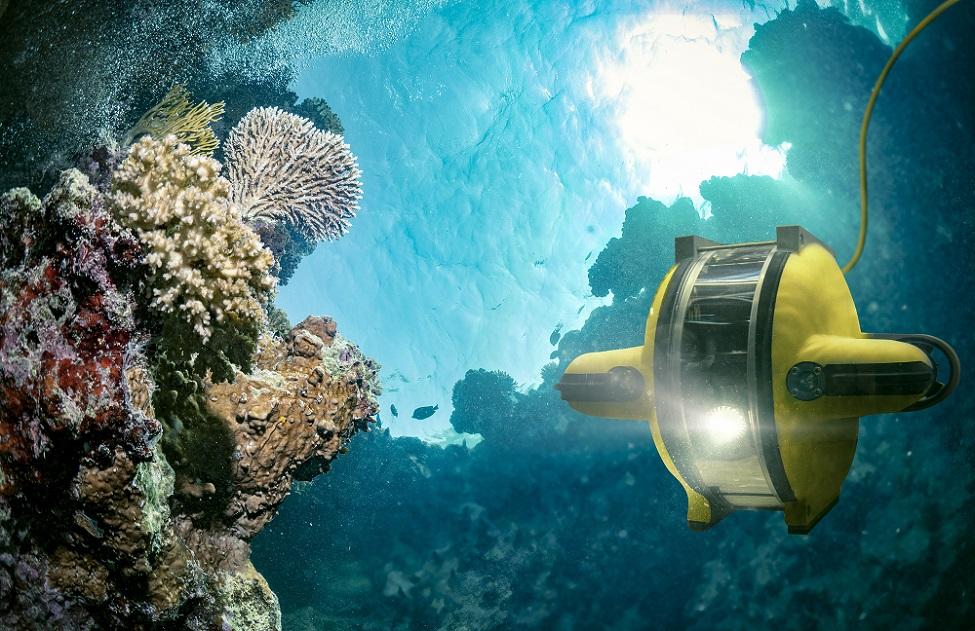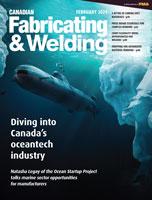Associate Editor
- FMA
- The Fabricator
- FABTECH
- Canadian Metalworking
Diving into Canada’s oceantech industry
Ocean Startup Project’s Natasha Legay talks marine sector opportunities
- By Lindsay Luminoso
- March 11, 2024
- Article
- Fabricating
Did you know that Canada has the largest coastline of any other country in the world? According to Statistics Canada, Canada's coastline is the world's longest, measuring 243,042 km (this includes the mainland coast and the coasts of offshore islands). Compare this with Norway (83,281 km) at No. 2, Indonesia (54,716 km) at No. 3, Russia (37,653 km) at No. 4, the U.S. (19,924 km) at 8, and China (14,500 km) at No. 10.
Based on the boundary of its exclusive economic zone, Canada’s jurisdiction covers 5.76 million sq. km, 62 per cent of which are located in the Arctic Ocean, 30 per cent in the Atlantic Ocean, and 8 per cent in the Pacific Ocean.
These statistics indicate a great opportunity for Canadian manufacturers who support the growing marine and oceantech industry. Canadian Fabricating & Welding spoke with Natasha Legay, senior program coordinator of the Ocean Startup Project, a two-year, pan-Atlantic endeavor whose goal is to inspire students, researchers, and innovators to build and grow startups in Canada through activities and investments designed to boost Canada’s ocean economy.
The Ocean Startup Project was the first Innovation Ecosystem Project announced by Canada’s Ocean Supercluster. Today, the project has partnerships across the country and contacts in Nova Scotia, PEI, New Brunswick, Newfoundland, British Columbia, and Quebec to support the wide-ranging innovation surrounding ocean and marine industries.
Canadian Fabricating & Welding: What is the current state of marine and oceantech innovation and manufacturing in Canada?
Natasha Legay: Marine and oceantech in Canada has been steadily gaining momentum over the past several years. Since the Ocean Startup Project launched in 2020, we have not only seen an increase in innovative new early-stage ocean companies, but we have also seen ocean innovation hubs develop and emerge right across the country. These hubs include the Centre for Ocean Ventures and Entrepreneurship (COVE) and The PIER in Nova Scotia, The Launch in Newfoundland and Labrador, Novarium in Quebec, and the Centre for Ocean Applied Sustainable Technologies (COAST) in British Columbia.
The ocean economy presents an important opportunity as a driver of economic growth in Canada while at the same time helping our nation achieve sustainability and climate change goals. The OECD [Organisation for Economic Co-operation and Development] predicted in 2016 that the global ocean economy would double in size by 2030 to $4 trillion CAD. This pre-pandemic prediction is still expected to continue on this growth trajectory and is said to have outpaced the broader economy’s growth by 20 per cent. As of 2019, only 1.6 per cent of Canada’s overall GDP came from the ocean economy. That is half of the global average GDP contribution of other ocean economies around the world, which presents much potential growth that can be unlocked for Canada.
Manufacturing capabilities in Canada will play an integral role in growing the country’s ocean economy. The development of new technologies in emerging and evolving industries, such as clean energy and decarbonized shipping, will require innovative manufacturing processes. This could represent an opportunity for Canada to transition and adapt capabilities from traditional manufacturing industries and sectors with less room for growth over to new emerging ocean-related markets, which will help further position the country as a global leader in the ocean economy.
CFW: What are some of the challenges facing the marine and oceantech manufacturing industry?
Legay: Some of the challenges when it comes to marine and oceantech manufacturing include high upfront hardware costs along with lengthy product development cycles and regulatory complexities for testing and deployment.
Current and potential barriers to advancing technology in the sector are ones that other sectors continue to face, such as limited access to venture capital funding and competition for qualified talent.
While Canada has a lot of great non-dilutive funding available, there is still room to grow when it comes to the amount of equity investment ocean startups are raising. The good news is there are a lot of great accelerator programs and organizations in the national startup ecosystem that are working to raise awareness of investment opportunities in the ocean economy and help connect high-growth ocean innovation companies with investor networks.
Access to highly qualified talent is another key factor to driving growth in the marine and oceantech industry. When you think of a career in oceans, most may think of a marine biologist, but the career opportunities in ocean industries range vastly. Increased exposure to role models and career opportunities can help inspire more people to pursue ocean-related career opportunities. There are a lot of great organizations working to incorporate oceantech into school curriculum and increase workforce diversity in ocean industries. I think these are all important steps to help reduce barriers for Canadian marine and oceantech companies who are looking to grow.
CFW: What are the latest innovations and technology trends in Canada's oceantech industry?
Legay: We are seeing really impactful technologies being developed right across Canada. This includes innovations related to autonomous underwater vehicles (AUVs) for mapping the ocean floor, conducting research, and collecting data in challenging underwater environments; advances in clean energy solutions such as wind, wave, and tidal power; and the integration of digital twins for efficient design and maintenance.
Canada’s natural assets and traditional connections to the ocean position us well to excel on a global stage. With the longest coastline in the world, Canada is a great place to test and develop oceantech, particularly because of expertise in harsh environments like the North Atlantic or Arctic. We also have the potential to benefit from the unique expertise, perspectives, and traditional knowledge of the ocean through collaboration with Indigenous communities.
CFW: What are some recent manufacturing ventures the Ocean Startup Project has taken on, and what support can companies expect?
Legay: Through our Lab2Market and Ocean Challenge competitions, we have seen a wide variety of ocean ideas and technologies. Ideas have ranged from creating a digital inventory and metal 3D printing solution to help remote industries like offshore oil and gas reduce surplus inventory and the costs associated with downtime, to an underwater remotely operated vehicle with a specialized robotic arm and AI platform to increase the efficiency and reduce risk of underwater welding.
There are a number of resources available for innovative companies looking to dive into oceantech. For companies at the earliest stages, the Ocean Startup Project offers several funding and mentorship programs to help entrepreneurs explore the commercial opportunity for their technology, further their prototype development, and develop a network in the ocean sector.
Other companies that have been established for some time may be looking to adapt their existing terrestrial-based technologies or products to ocean applications. For them, Canada’s Ocean Supercluster offers a number of programs where Canadian companies can receive matching funding to develop collaborative technology projects.
In addition to funding programs, ocean hubs like COVE and The Launch offer resources like machine shops and testing facilities that support prototyping and product development.
CFW: How can Canadian businesses and manufacturers succeed in this industry?
Legay: We are big believers that Canadian businesses and manufacturers can succeed in ocean industries by pursuing collaborations with academia, industry, and government, as well as by adopting a customer-focused approach and global mindset. Post-secondary institutions in Canada are producing cutting-edge ocean research and technology, which can be advanced commercially through industry collaboration. This, combined with increased collaboration with government, can lead to a positive regulatory environment and supportive ecosystem that drives innovation.
Contacts and resources across Canada
Canada’s Ocean Supercluster (OSC)
St. John’s, N.L.
OSC is an industry-led collaboration involving more than 320 industry and associate members, from organizations and companies of all sizes.
With investments from across the country and connections with international partners and Indigenous communities, OSC builds and funds large projects to increase Canada’s existing strengths, experience, and knowledge while advancing new opportunities.
Its vision is to accelerate solutions to address global ocean opportunities, building a stronger Canadian economy and a healthier planet. Its mission is to drive growth of Canada’s ocean economy, deliver collaborative solutions, build a strong global ocean brand, connect ocean communities, and build Canada’s diverse ocean workforce.
Centre for Ocean Applied Sustainable Technologies (COAST)
Victoria, B.C.
Set on Canada’s Pacific coast, COAST brings together people, ideas, businesses, and communities to create an innovation hub where ideas are nurtured and applied.
With a focus on clean tech and digital technologies, its goal is to build B.C. into a global leader in the world’s rapidly growing ocean economy, creating new sustainable, export-driven jobs and enterprises.
Centre for Ocean Ventures and Entrepreneurship (COVE)Dartmouth, N.S.
Located at Canada’s deepest harbour, COVE helps businesses turn ideas into commercial solutions. Technology companies, post-secondary researchers, and marine-based service businesses come to the COVE facility for programming and short- and long-term projects.
Its mission is to connect people, ideas, resources, and assets to propel solutions and sustainable growth for Canada's marine sector. It aims to help businesses discover and grow with expansive access to a diverse network of partners, collaborators, investors, researchers, employers, technicians, and mentors that represent every sector of the marine economy.
Novarium
Rimouski, Que.
Novarium brings companies, investors, and the scientific community together around a business ecosystem geared toward developing opportunities, sharing knowledge, and creating national and international exposure.
The mission of Novarium is to accelerate the blue economy through the development of startups from the laboratory to the market, open innovation in industrial R&D, and the creation of scientific and business collisions.
The Launch
Holyrood, Nfld.
The Launch is The Marine Institute’s state-of-the-art living lab that makes the world’s harshest cold-ocean environments accessible to marine sector businesses and startups. Companies can run their ocean technology through research and development, testing, and demonstration in a rigorous cold-ocean environment to prove its real-world readiness.
Engineering and technical teams facilitate access to research focused on ocean mapping, habitat delineation, forecasting, modelling, management, and operational decisions, providing ideal conditions for industry, academia, and other stakeholders to come together and collaboratively implement leading initiatives.
The Launch provides support to industry, researchers, students, and stakeholders in a unique operational field environment.
The PIER
Halifax, N.S.
The PIER (Port Innovation, Engagement, and Research) is a global centre of excellence for innovation and collaboration in transportation, supply chain and port logistics, management, and development. It brings together partners, stakeholders, researchers, and entrepreneurs dedicated to exploring industry problems within three areas of focus.
It has turned the Port of Halifax into a living lab where members can tackle industry challenges in real port conditions.
About the Author

Lindsay Luminoso
1154 Warden Avenue
Toronto, M1R 0A1 Canada
Lindsay Luminoso, associate editor, contributes to both Canadian Metalworking and Canadian Fabricating & Welding. She worked as an associate editor/web editor, at Canadian Metalworking from 2014-2016 and was most recently an associate editor at Design Engineering.
Luminoso has a bachelor of arts from Carleton University, a bachelor of education from Ottawa University, and a graduate certificate in book, magazine, and digital publishing from Centennial College.
subscribe now


Keep up to date with the latest news, events, and technology for all things metal from our pair of monthly magazines written specifically for Canadian manufacturers!
Start Your Free Subscription- Trending Articles
Aluminum MIG welding wire upgraded with a proprietary and patented surface treatment technology

CWB Group launches full-cycle assessment and training program

Achieving success with mechanized plasma cutting

Hypertherm Associates partners with Rapyuta Robotics

Brushless copper tubing cutter adjusts to ODs up to 2-1/8 in.

- Industry Events
MME Winnipeg
- April 30, 2024
- Winnipeg, ON Canada
CTMA Economic Uncertainty: Helping You Navigate Windsor Seminar
- April 30, 2024
- Windsor, ON Canada
CTMA Economic Uncertainty: Helping You Navigate Kitchener Seminar
- May 2, 2024
- Kitchener, ON Canada
Automate 2024
- May 6 - 9, 2024
- Chicago, IL
ANCA Open House
- May 7 - 8, 2024
- Wixom, MI



















